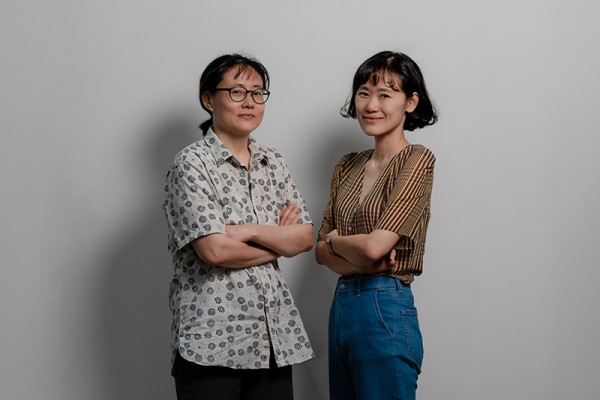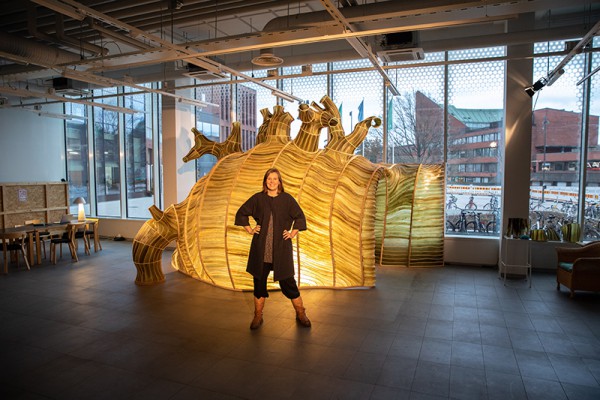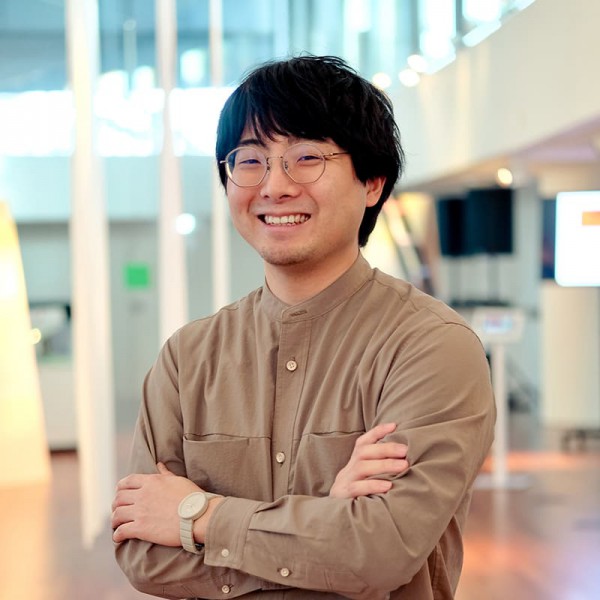<Muddy-Water>
Trans-boundary Algorithm, 2023, UV ink drawing, vinyl lettering, UV lantern, Hanji, bamboo, 200×150cm.
Muddy-Water, 2023, View master, reel, pdf file in iPad, Dimension variable.
200 Trans-boundaries, 2023, 200 kite editions(inkjet print on Hanji, bamboo kite frame, paper reel, string), wood structure, wood desk, wood stool, desk ramp, Dimension variable.
Muddy-Water, 2023, Two single-channel videos, color, stereo sound, 10 min.
All Commissioned by Sea Art Festival 2023.
Lab C explore locations in different regions, and in nature to discover nuanced stories. They led a workshop with children for Sea Art Festival 2023 to explore forgotten spaces around Ilgwang, especially the Ilgwang Stream which is a brackish water zone. The results and videos of the workshop are presented in this exhibition allowing us to contemplate the importance of our relationship with nature.
Muddy water has a blurry meaning, as it can be a mixture of dirt and water. “Blurry” is an interesting term for the artists here, as it indicates a changing state, for example a variable status between “clean (or flowing, running) water” and “dirty (or stagnant, messy) mud.”
In Korean, as in other languages, the phrase “muddy water” is used frequently and commonly in a negative way. And similarly, the expression “mud fight”, which figuratively indicates a dirty fight. This ambivalence between “positive” and “negative”, or “water” and “dirt”, while confusing, it can be fascinating. Like the randomness of chaos that can have varied potential.
Ilgwang Stream, which meets Icheon Port on the left side of Ilgwang Beach, flows into the sea by combining 10 tributaries, including Dalum Mountain Valley, Hambaek Mountain Valley, Nine Mountain, and Ilgwang Mountain Valley, which are the origins. And when the tide progresses, the seawater flows back into the Ilgwang Stream. Ilgwang Stream, where seawater and freshwater meet, is a brackish water area and a wetland. According to a survey by the Busan Research Institute in 2001, a total of 395 species were observed in the area, and in 2005, salmon, which was released into the wild from Gijang, returned in the stream. In 2021, with the creation of Ilgwang Icheon Ecological Park and the surrounding trail project underway, rapid changes are expected to occur in the ecological environment of Ilgwang Stream.
Lab C’s research shows evidence of fish diversity in the stream. In addition to the four-white fish of Ilgwang Stream, sweetfish, mullet, perch, blowfish, salmon, and eel, which are conciliatory fish, and even the brackish brown goth, which is second class endangered shellfish.
If one walks up along Ilgwang Stream, they will see the river maintenance work still in full swing. The spatial transformation of brackish water and wetlands continues. When management and control systems began to intervene, the flow of water that naturally flowed into the sea is changing. And obviously, changes are also occurring in various life forms that rely on wetlands and brackish water areas. Could this human intervention here be considered a recovery or another destruction? It is at this point that the artists are interested in questions about the presence of Ilgwang Stream through the concept of 'muddy water.'







